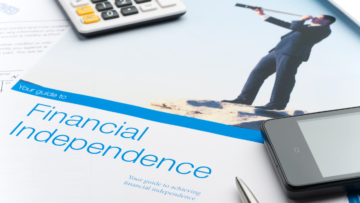More than half of American workers say they are behind in saving for retirement. Without understanding how much money they’ll actually need, many people are failing to effectively save at all.
Retirement is a topic that regularly makes headlines, and not all of them are encouraging. A wave of studies this year show just how unprepared Americans are when it comes to saving – and planning – for their golden years.


Results from a new MoneyRates.com survey, ‘Are Your Spending Habits Retirement Ready?‘ shows that many simply aren’t taking basic steps to plan for retirement. Despite questions surrounding the future of retirement programs such as Social Security and Medicare, they found that large percentages of those approaching retirement age (and those already retired) are financially unprepared.
Another separate by from Northwestern Mutual’s Planning & Progress Study showed More than half (56%) of American adults don’t know how much money they’ll need to retire. Without understanding how much money they’ll actually need, many people are failing to effectively save for retirement.
Alarming results from a Bankrate Study revealed more than half of American workers (52%) reported that they were behind their own savings goals for the future golden years. A mere 16% said that they were right where they needed to be, and only 11% said they were ahead of where they ought to be. Meanwhile, 20% responded that they didn’t know where their retirement plan stood.
Despite an August 2019 Bankrate study showing that Americans have been increasing their retirement contributions throughout the economic recovery, the total balance of those savings remains well behind where they need to be, according to data from the latest survey.
Additional results from the MoneyRates survey findings show:
- Seventy-one percent (71%) of respondents within 20 years of retirement age haven’t run a projection to see how long their retirement savings may hold up over their life expectancy.
- Even among those who have reached retirement age, most (62%) don’t know how long their savings should last.
- Seventy-one percent (71%) within 20 years of retirement age have not researched the cost of moving into a nursing home or assisted living facility, and 64% of those 65 and older have not researched those costs.
- Most respondents (53%) within 20 years of retirement age say they expect to retire with less than $100,000 in savings, and 46.8% of respondents age 65 or older report having less than $100,000 in savings.
Now for Some Good News…

While the above study results are disheartening and seem to emphasize how unprepared people are, other research suggests that the retirement outlook may not be as bleak as it seems:
- 6 out of 10 workers say they feel confident or somewhat confident about being able to enjoy the kind of retirement they want.
- 57% of workers say saving for retirement is their top financial priority.
- 62% of workers expect their standard of living to stay the same or increase in retirement. (Transamerica)
- More than one-third of households owned an individual retirement account (IRA) in 2019.
- Of the households that made contributions to an IRA, 43% contributed to traditional IRAs, while 44% contributed to Roth IRAs, and 13% contributed to more than one type of IRA. (ICI.org)


As you can see, many aren’t saving what they should, but it’s not all bad news. If your financial situation takes a hit, there are things you can do to get your retirement plan moving in the right direction again. Prioritizing the following two steps will maximize your results in gaining back control of your financial future:
- Catching Up
First things first; cut back on expenses to replenish your emergency fund. Without an emergency fund, unexpected expenses can lead to debt or force you to raid your retirement accounts and trigger penalties.
Next, start up your retirement contributions again by:
- Making contributions through your employer’s retirement plan, such as a 401(k) or 403(b) plan.
- Open a traditional IRA or Roth IRA.
- After you’ve maxed out your IRA contributions, make additional contributions to your employer’s retirement plan, up to the current year’s limit.
- Set up an automatic payment to your IRA or a paycheck deduction to your employer plan.
To find out how your retirement savings are shaping up, try our financial calculators here.
2. Reviewing Your Financial Plan
If you’re like most people, you saw your portfolio value drop during the pandemic, and you may be worried about the potential for more volatility.
For those who are suffering from consequences of the coronavirus crisis, organizing your finances and reviewing your portfolio asset allocation is a great start.
If you don’t have an investment strategy that guides you during times like these, now is the time to get one. Consider talking with a financial advisor who will advise on your portfolio as part of your overall financial situation and goals.
Finding a retirement advisor that fits your needs doesn’t have to be hard. Depending on your situation, a good retirement income planner can help create an investment portfolio with little to no risk and recommend an investment strategy to help you reach your retirement goals.
At CKS Summit Group, our focus is to bring you fresh new ideas for your retirement income. Our cutting edge tactical portfolios help our clients achieve safe, healthy growth of their savings and preservation of their principal balance.
Despite the fear you may be facing, it’s important to avoid giving in to fear during times like these. Come experience the new evolution of Retirement Income Planning. Set up your complimentary strategy session with us today by calling 586-286-5820 or via our website at SummitGP.com.



